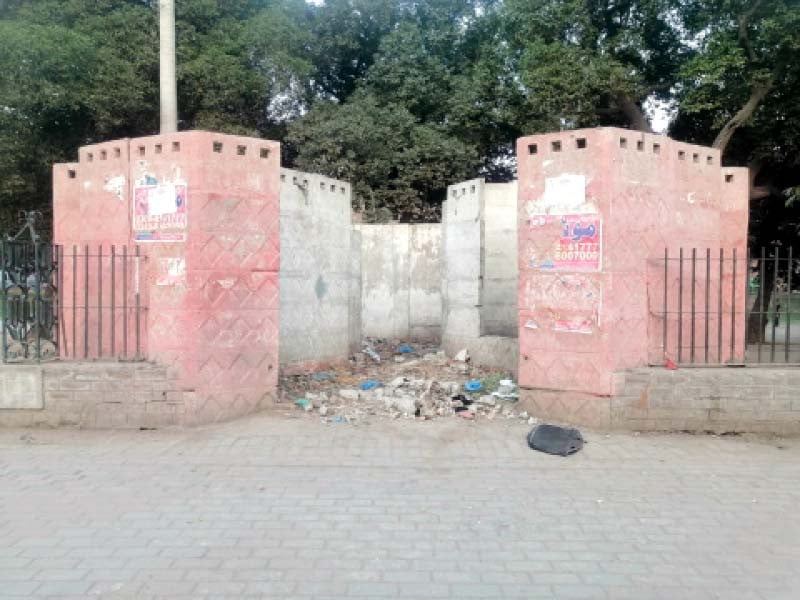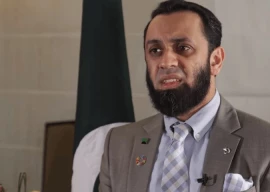
Answering a call of nature in any of the country’s public toilets involves navigating several hurdles which include but are not limited to putrid odours, broken doors, and lack of sanitation.
Even if these hurdles can be miraculously overcome, finding a public toilet in a busy city centre is itself a herculean task therefore people often resort to defecating on sidewalks. Pakistan’s most populated city, home to nearly 16 million people, Karachi as per an Express Tribune survey has only 17 lavatories to offer along its main highways.
Karachi’s low numbers are aided by cases of demolition. For instance, the Citizen Police Liaison Committee (CPLC) constructed 54 public toilets on major highways and in government institutions and hospitals uptil 2013 (without any government funds). Present-day, 17 of these were demolished due to development projects. Similarly, according to the management of District Municipal Corporation (DMC) South, 21 restrooms were constructed in the past out of which a few were demolished in an anti-encroachment drive and only 6 are operational today.
Realizing that finding a lavatory is a hassle, the Khyber Pakhtunkhwa (K-P) government launched a public toilet finder mobile application in 2019. Although a step in the right direction, the application did not address the unhygienic conditions. Javed Anjum, a resident of the city while talking to the Express Tribune informed, “no one uses these restrooms due to the unsanitary conditions. The government does not spend a penny on repairing or making these toilets usable.”
Those responsible for cleaning the lavatories only enjoy collecting the fee of using it as the cleaning itself is a daunting task, as per Zahid Masih a cleaner employed at one of Peshawar’s measly 31 public restrooms.
Pakistan’s second most populous city, famous for its dining and shopping options, Lahore offers an insignificant number of 21 toilets out of which 8 are operational and the remainder shut down. However, the Metropolitan Corporation, contesting these numbers, informed that there are 48 toilets in 8 different areas of Lahore.
The residents of Lahore feel that even this number is trivial. Abdullah Malik expressing his disappointment said that there is a lack of public toilets and the ones that exist are hotbeds for diseases and inoperational. Inactive toilets are a nuisance themselves as they spread fetid smells in nearby sidewalks and parks which hinders citizens from using them.
An increase in lavatories is on the cards for the city as per the Commissioner, Captain (Retd) Muhammad Usman, who told the Express Tribune that under their plans to improve the infrastructure of Lahore, five to ten public toilets would be added in each town.
Towards the northeast of Lahore, some 380 kilometres away, the federal capital and its twin Rawalpindi offer a joint total of 27 public latrines. As if the presence of uncleaned faeces and lack of sewerage was not a deterrent, to use one of these lavatories would cost the public anywhere between Rs. 30 to 50 payable to a private contractor. The operations of the twin cities’ public restrooms, like other cities’ toilets, is given to private contractors by the Capital Development Authority (CDA) and Metropolitan Municipal Corporation (MMC). CDA spokesman Asif Mehmood, informed the Express Tribune, that these contracts are given on merit and strict enforcement of cleanliness is a requirement to get one.
Women and differently-abled deprived of access
Apart from missing faucets and soap, most of the public lavatories of the country are missing ramps for those with disabilities and women-only ones are missing entirely. Anam Azfar Ali, Coordinator for the Disabled Welfare Association in Karachi, said “the few ramps that exist are impossible to use for someone on a wheelchair. Even if they manage to use the ramp, the toilets are in shambles.”
Mohammad Ibrahim, a 70-year-old resident of the city, seconding Anam suggested that if the Sindh government cannot provide them toilets they should at least make it binding on petrol pumps and shopping spaces to let the public use restrooms.
Dr Riaz Ahmed Awan, Regulation Officer of Peshawar’s Local Council Board, denied that the city did not have public latrines for women. “Public toilets exist for all genders, women just do not use them because of a cultural barrier,” said Awan.
The twin cities' women shoppers, forced to use men’s restrooms, are not only fed up with the sparse number of lavatories in busy shopping centres like Jinnah Super and Moti Bazar but a few expressed their disgust to the Express Tribune at their state: “the door latches are missing and the walls have telephone numbers written by disgruntled lovers and other men note these down to harass women over the phone.”
Disgruntled cleaners
Another uniting factor for the country’s public toilets, apart from the lack of hygiene, is unpaid workers. Resultantly, a refusal to clean. Muhammad Sabir, the caretaker of a public toilet at Jail Chowrangi Karachi, said that he had not received any salary ever since he started working. Lahore’s sanitary workers, seconding Sabir, said that the city’s washrooms were filthy because they were not paid enough to clean up.



1729137363-0/Liam-Payne-fans-(1)1729137363-0-165x106.webp)






1731062031-0/Express-Tribune--(5)1731062031-0-270x192.webp)
1731065030-0/Untitled-design-(26)1731065030-0-270x192.webp)






COMMENTS (1)
Comments are moderated and generally will be posted if they are on-topic and not abusive.
For more information, please see our Comments FAQ